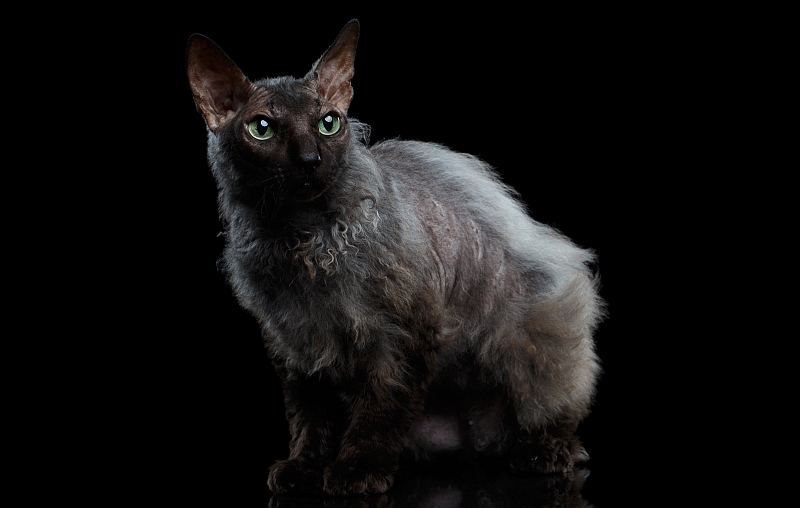Yes you read that title correctly, there is such a thing as a “werewolf cat” breed. In past blogs we have explored the way cats have been worshiped by many cultures historically, as well as feared as demonic beings by superstitious civilizations. This particular cat breed makes the logical leap from gentle domestic pet, to mysterious mythical creature not such a very difficult connection. Find out more about this unique looking felines and how they came to be known as the “werewolf cat.”
Lykoi/Werewolf Cat Facts
Another name they were known as is the Lykoi cat (coming from the word “wolf” in Greek) which is the official breed name recognized by the International Cat Association.
The cat is a recently breed, developed by a veterinarian named Johnny Gobble and his wife Brittney. They begin breeding the cats around 2010 from their Tennessee home, building on a genetic mutation that sometimes appears in domestic shorthair cats, which results the inability to grow a full, thick coat of fur. As a result the cats are typically black, blue, gray, smoke and have the appearance of a possum, with uneven fur lengths.
Werewolf cats, or Lykois have unusual hair patterns, and can suffer from patchiness, low-hair count, and in some cases near-baldness. Young Lykoi cats shed heavily in their youth, but can grow uneven amounts of hair later in life, which contributes to the bizarre appearance of their coat, as no two “werewolf cats” look exactly alike.
These felines are entirely without an undercoat, making them subject to the assumption by many that they are related to the hairless Sphynx cats. While the Lykoi and the Sphynx are not closely related, the Lykois do have sparse hair around their eyes, nose and face, making them appear as haggard as a “werecat.”
In spite of their rather “off-putting” appearance, the Lykoi cats are known for being playful, affectionate and extremely friendly with their families and visitors. Gobble acknowledges that the cats “are extremely loyal to their owners, very scent motivated, and very intelligent.” He goes on to say that their attachment instinct can make these cats clingy and needy at times (much like a canine companion), but they will eventually go amuse themselves alone if they need to.
This wily breed was first acknowledged by the International Cat Association in 2011, though the numbers are still very low. There is a record of only 230 registered Lykoi cats in America, though a few dozen have been spotted in feral cat groups across the country.
Lykois are not considered strictly a “designer” breed, but they certainly come at a high price. The cost of a Blue Lykoi is roughly $1,500, while Black Tuxedo Lykois and Black Roan Lykois can soar as high as $1,800-2,500. While purchasing this kind of cat will certainly end up being a serious financial investment, many people consider this a worthwhile cost in exchange for owning their very own werewolf cat. Halloween here we come!

